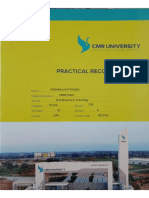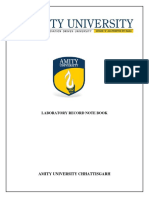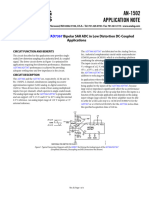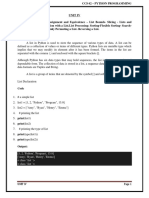0% found this document useful (0 votes)
10 views5 pagesData Structures
The document provides an introduction to basic data structures in Python, including lists, sets, tuples, and dictionaries. It demonstrates how to create, modify, and access elements in these data structures with code examples and their outputs. Key operations such as adding, removing, and combining elements are illustrated for each data structure.
Uploaded by
pratyushsagar31Copyright
© © All Rights Reserved
We take content rights seriously. If you suspect this is your content, claim it here.
Available Formats
Download as PDF, TXT or read online on Scribd
0% found this document useful (0 votes)
10 views5 pagesData Structures
The document provides an introduction to basic data structures in Python, including lists, sets, tuples, and dictionaries. It demonstrates how to create, modify, and access elements in these data structures with code examples and their outputs. Key operations such as adding, removing, and combining elements are illustrated for each data structure.
Uploaded by
pratyushsagar31Copyright
© © All Rights Reserved
We take content rights seriously. If you suspect this is your content, claim it here.
Available Formats
Download as PDF, TXT or read online on Scribd
/ 5




















































































